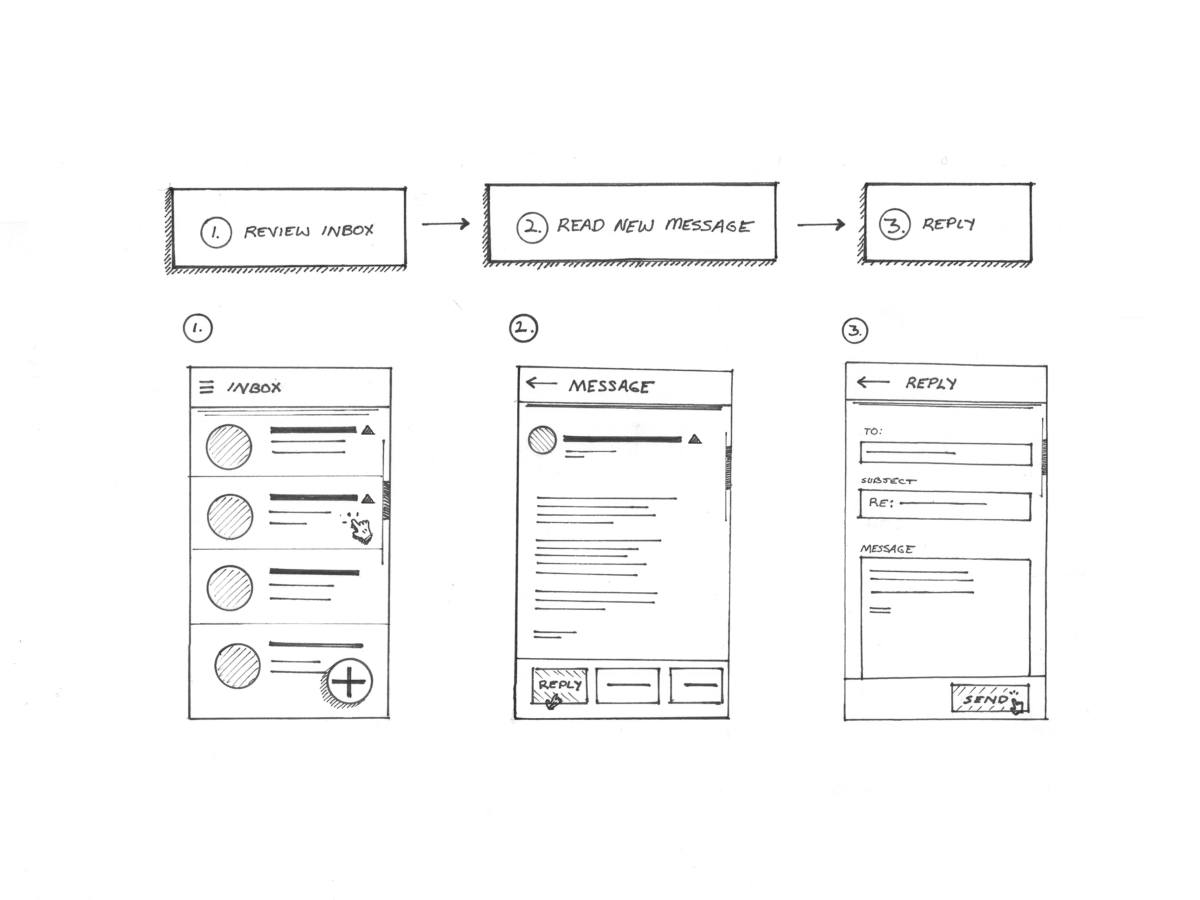
This is How I Got Here, a series where we chart the career journeys of technologists. Want to tell your story? Get in touch.
Kent Eisenhuth is a big believer in hanging scribbles and doodles around your office.
You’d know that from looking around his own workspace at home in Wynnewood, featuring plenty of drawings that helped him explore and develop ideas in their early stages.
“A lot of times I’ll hang my drawings around me and just kind of live with them for a bit,” he told Technical.ly. “You start to see things about that drawing that might help you further develop that idea or maybe kind of push you in a different direction to explore.”
Eisenhuth, a designer for Google, is releasing his book “Drawing Product Ideas: Fast and Easy UX Drawing For Anyone” in November about the importance of UX drawing, a method that uses hand drawn sketches as a way to develop, communicate and share product design ideas, as well as how professionals can gain confidence in the drawing process.
A hand-drawn career
A lifelong artist, Eisenhuth wanted to be an architect as a kid, and loved to design and draw pictures of buildings. He went to school for visual design and moved to Philly after graduating to work in advertising. He said he saw the value of drawing within the product development process early in his career, and realized he should hold onto his childhood drawing skills.
He eventually worked at Electronic Ink, which eventually became part of the influential international firm Frog, as a consultant designing products and services. There, he used participatory design, a method where all stakeholders are involved in the design process, in working sessions. Drawing became a way to develop and communicate ideas, especially in the workshopping process.
Eisenhuth saw the value of drawing within the product development process early in his career, and realized he should hold onto his childhood drawing skills.
Not everyone he worked with saw the value of drawing. Once, he said, he consulted with a client’s leadership team who insisted they were “not the whiteboarding type of people.” But by the end of their time together, he had convinced the VP of logistics to get up in front of everyone and draw out an idea.
“It was amazing just watching all the people kind of rally around that drawing and kind of building on it and really embodying the design thinking process — which is something we always advocate for as designers, but seeing business leaders and executives at this particular company doing that was really special,” Eisenhuth said.
Most drawings focus on answering an overarching question, he said, whether that be users achieving a goal or completing a task in an app, on a website or through a service. Take the example of designing a better caller experience for a customer service call center: The team could use drawing to map out the existing call menu and routing structure, and then draw out visuals to redesign those elements.
Here’s an example of using basic shapes, lines and symbols to draw out an idea related to email:

(Courtesy image)
Words about pictures
At his current job at Google, he leads the cloud data visualization team from the design side. Four years ago, his mentor and former head of Google Cloud data visualization (and now senior director and head of design at Interos), Manuel Lima, became familiar with his process and encouraged him to write a book.
“I started really thinking and reflecting on my own personal process, and thinking about a way I can make that available to other people and help them along in their own design process,” he said, “and how to encourage other people who aren’t designers to become more involved in that process too.”
Eisenhuth said his book takes a systematic approach to drawing to give people more confidence in their drawing skills, and gives tips and tricks for getting started with UX drawing. Lima ended up writing the foreword for the book.
The author assures that most people just need to draw well enough that they can share and develop their ideas; the drawings don’t need to be masterpieces. He also suggests people draw by hand.
“The activity of actually physically drawing something out just really helps you work out the details in your head as you’re exploring that idea,” he said. “And because it’s quick, it’s disposable. You can move on to another piece of paper and refine that idea fairly quickly.”
Most of all, Eisenhuth really wants to introduce the idea that anyone can draw, especially to contribute to a product or service development process.
“It’s amazing how people perk up when they start to see a diagram, a drawing, even just simple shapes drawn on a board over a concept and how that becomes the thing that starts the evolution of the idea,” he said.
Eisenhuth’s book is available for presale on Amazon now and will be available most places where books are sold on Nov. 1.
Sarah Huffman is a 2022-2024 corps member for Report for America, an initiative of The Groundtruth Project that pairs young journalists with local newsrooms. This position is supported by the Lenfest Institute for Journalism.Join the conversation!
Find news, events, jobs and people who share your interests on Technical.ly's open community Slack

Philly daily roundup: Jason Bannon leaves Ben Franklin; $26M for narcolepsy treatment; Philly Tech Calendar turns one

Philly daily roundup: Closed hospital into tech hub; Pew State of the City; PHL Open for Business

A biotech hub is rising at Philadelphia’s shuttered Hahnemann Hospital campus


